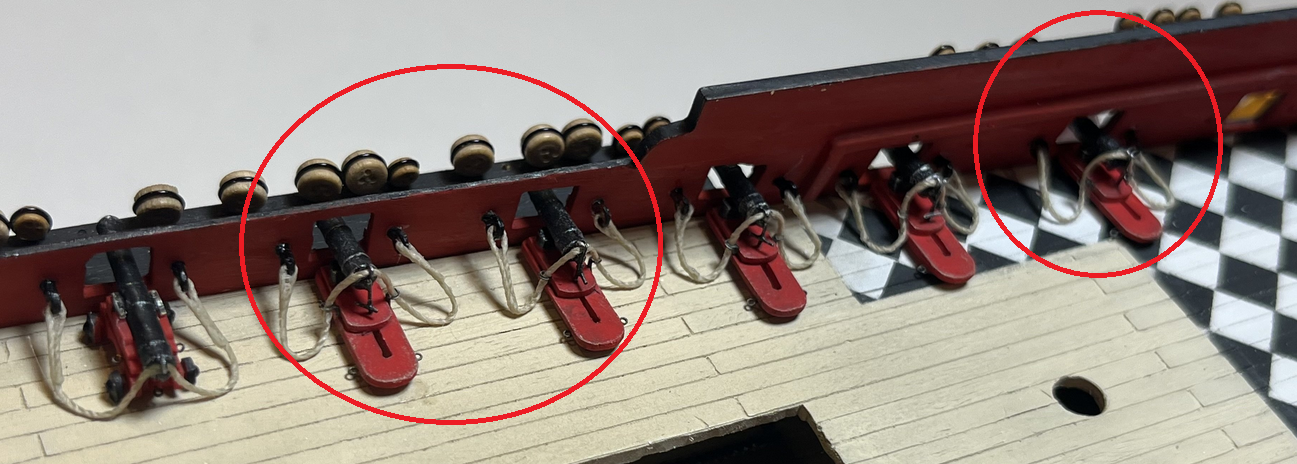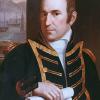-
Posts
268 -
Joined
-
Last visited
Content Type
Profiles
Forums
Gallery
Events
Posts posted by Chapman
-
-
The only 1:350 scale kit that comes close to the Destroyer Type 1934a is the one from Zvezda/Revell, and that's a Type 1936. This means a lot of modifications, especially to the superstructure. It's possible, but involves a lot of research and work.
-
Suitable examples can be found in contemporary paintings, drawings, and models to illustrate the differences to boats from later periods.
A friendly inquiry to Mr. Endsor about this topic, via his website, might also be a good idea.
I found him to be a very friendly person to talk to.
Edit:
At this point, I would like to take the opportunity to mention his new book, which is scheduled for publication next year.
The Lost Ships of Charles II's Navy: Understanding the Seventeenth-Century Warship by Richard Endsor
-
Restoration Warships by Mr. Endsor
contains beautiful drawings with frame plans for the
31ft longboat
30ft pinnace
23ft yawl of HMS Lenox.
The Master Shipwright's Secrets
for the longboat and pinnace of HMS Tyger, based on a boats contract and contemporary models.
They don't look strikingly different from boats from the 18th century. But the details make all the difference. Finding suitable ones for the scale of the Airfix Prince is a challenge in the first place.
- Dan DSilva, Marcus.K. and CiscoH
-
 3
3
-
Richard Endsor's books, with titles like *The Restoration Warship* or *The Master Shipwright's Secrets*, depict boats from that era. I can't say offhand how complete the drawings are; I'd have to look through the books for that. Which is always a pleasure.
- druxey, Dan DSilva and Marcus.K.
-
 3
3
-
Quote
I wonder if the Danish ships was treated the same as well... HDMS Holsteen was captured in 1801 by the Brits and they reused it as HMS Nassau. They used it to capture other ships in the Napoleonic wars. She even served in the second battle of Copenhagen in 1807.
So she must have been a fine ship.
My guess is that she was repainted and rearmed and rerigged.Hi Aldaris
Some basic information about the armament.
https://threedecks.org/index.php?display_type=show_ship&id=4754
The NMM Museum might also have plans for the Holsteen/Nassau.
-
-
11 hours ago, uss frolick said:
Most of the book is just fine. But the author found plans of beautiful, but unusual, schooner taken off in a Maltese {?} dockyard, and claimed that those were of the uS Navy's Schooner Enterprise, which repaired there in 1804. I, and most others, think he was wrong. But his evidence is interesting, nevertheless, and it was only one chapter. I think the book is well worth the price. Geoffrey Footer is a well-known, trusted historian and author.
I can agree with that. However, the reproduction of the plans in my edition is rather poor to very poor.
- Canute, SaltyScot, thibaultron and 1 other
-
 4
4
-
If you want to use paints you already have that weren't specifically developed for DKM ships, you can simply check the model manufacturer's specifications to see if they would match the color of your desired model.
Scalemates.com offers the option to compare paints across manufacturers.
Experience has shown that the color on the screen looks different than the color in the can.
And the contents of the paint cans vary slightly in color from batch to batch.
In addition, some model builders wonder whether to use slightly lighter colors than the original to achieve the scale effect.
Life can be so hard
-

A look at one of her original plans (as captured) clearly shows that she had entire lids that opened upwards.
- hollowneck, GrandpaPhil, BritByker and 2 others
-
 5
5
-
Regarding the Shipyard cardboard model of the Coureur in 1:96 scale. I wanted to modify the model according to the English plans as taken. However, I noticed a problem with the dimensions.
I printed the English deck plan in length and width according to the known English specifications and placed it on the model. The length fits the model, but not the width, as you can see! -
An addendum: I remembered that I have an article about the U.S. Brig Syren 1803.
A Naval Architectural Study of the U.S. Brig Argus. BY W.M.P. DUNNE
Published in the NAUTICAL RESEARCH JOURNALContemporary information exists (Argus Journal of Indents, Naval History Society Collection) on the three boats of the U.S. Brig Argus from 1803. It describes the cutter on board, its size (25 ft) and its equipment (with a well and windlass), but not whether it was a clinker boat.
It seems doubtful whether any information about the Syren's boats can be found. Perhaps in the logbook, if it still exists. Based on current knowledge, I would build the cutter with carvel planking.
-
Clinker boats are more difficult to repair, which is probably why the English preferred clinker cutters on board in their home waters rather than on long overseas voyages. I don't know how the Americans handled this. The US frigate Constitution has been quite well researched, and there is a wealth of information on the types of boats used on board.
Author Tyrone G. Martin has compiled such facts in his literature on the Constitution.
The USS Constitution Museum has also collected information on the boats.
-
-
I actually wanted to reply to Force9's last post, which unfortunately no longer exists. However, it's no longer visible. So I'll skip the reply for now.
-
I have the following from Eriksen: CONSTITUTION All SAILS UP AND FLYING.
Chapter on Flags and Pennants 1812-1815. Pages 142-145
From Captain Hull's log:
"...then hoisted our Ensigns and Jack, at the Fore and Main Top Gallant Mastheads."
Eriksen supplements this information with his interpretation for the flags flying on Constitution under Captain Hull.Stars and Stripes from the peak and a second flag with canton even high with the main topgallant masthead. The U.S. Union Jack from the foremast (same height), and the Commission Pennant from the main mast-truck.
My addition:
Hull was not a commodore in this case, so it is quite likely that no broad pennant is displayed at the time of the engagement with the Guerriere. -
-
Hi Markus,
Flags with the slogan "Don't tread on me" or "Catch me if you can" are very common on contemporary depictions of US privateer ships from the War of 1812. "Catch me if you can" is pretty cheeky.😀
- thibaultron and Marcus.K.
-
 1
1
-
 1
1
-
Hello Waldemar,
Interesting project. I hope a better plan for the Randolph can be found.
M.V. Brewington thought about the design of the first US frigates many years ago.
His article, with plans for the first US frigates, can be found online. I don't know if you're familiar with it.
Published in: The American Neptune Vol. VIII No. 1 January 1948
Unfortunately, the plan for the Randolph isn't any better there either. -
I also find it worth mentioning that Corné depicts the USF Constitution's farewell salute here, possibly to a US battery from the home port. The ship's flag is lowered halfway and then raised again, accompanied by a simultaneous cannon salute.
- thibaultron and Marcus.K.
-
 1
1
-
 1
1
-
Pennants can also be seen on merchant ships; at least I know of two depictions of the famous sloop Union (1794?) with a pennant. I thought this might be a home pennant upon arrival in her home port, but she also carries this pennant in Nootka Sound.
- Unegawahya and Marcus.K.
-
 2
2
-
Attached is a recently discovered MIT link to a high-resolution file depicting the frigate USS Boston. Thanks to Baugean and the MIT Museum.
- Marcus.K. and uss frolick
-
 1
1
-
 1
1
-
It looks as if your Vanguard's shrouds are in danger of being damaged by its own guns. It's also worth noting that the gun ports for carronades are larger than those for cannons.
Every conversion of a model involves a lot of work, also because you are not aware of all the problems beforehand.

Attached for comparison is the plan of the Spartiate as fitted for the RN in 1803.
The Spartiate is still very French, but also shows corresponding RN modifications.
Edit:
HMS Spartiate is excellently documented for a conversion based on the Heller Le Superbe kit, except for the masts.
A French Spartiate would also be possible after appropriate research.
-
2 hours ago, AON said:
Chapman: I thought both Vanguard and Edgar were Arrogant class ships.
The Arrogant class is correct according to the anatomy book on HMS Bellona that I have in front of me right now. I got the classification for the Edgar class from Threedecks.org. Why they created a new subclass, I don't know at the moment.
-
HMS Vanguard, as one of the Edgar class ships, is certainly well represented in its initial state of construction by the plans of her class mate Elephant 1786. The forecastle would certainly have looked the same in 1798. The time when the forecastle of ships of the line was equipped with a bulwark came only a few years later.




Z13 Erich Koheller?
in Plastic model kits
Posted
Attached is a link to a lengthy but successful conversion to the destroyer Z14 Friedrich Ihn, following some early wartime modifications.
Z 14 Friedrich Conversion from Z17 kit